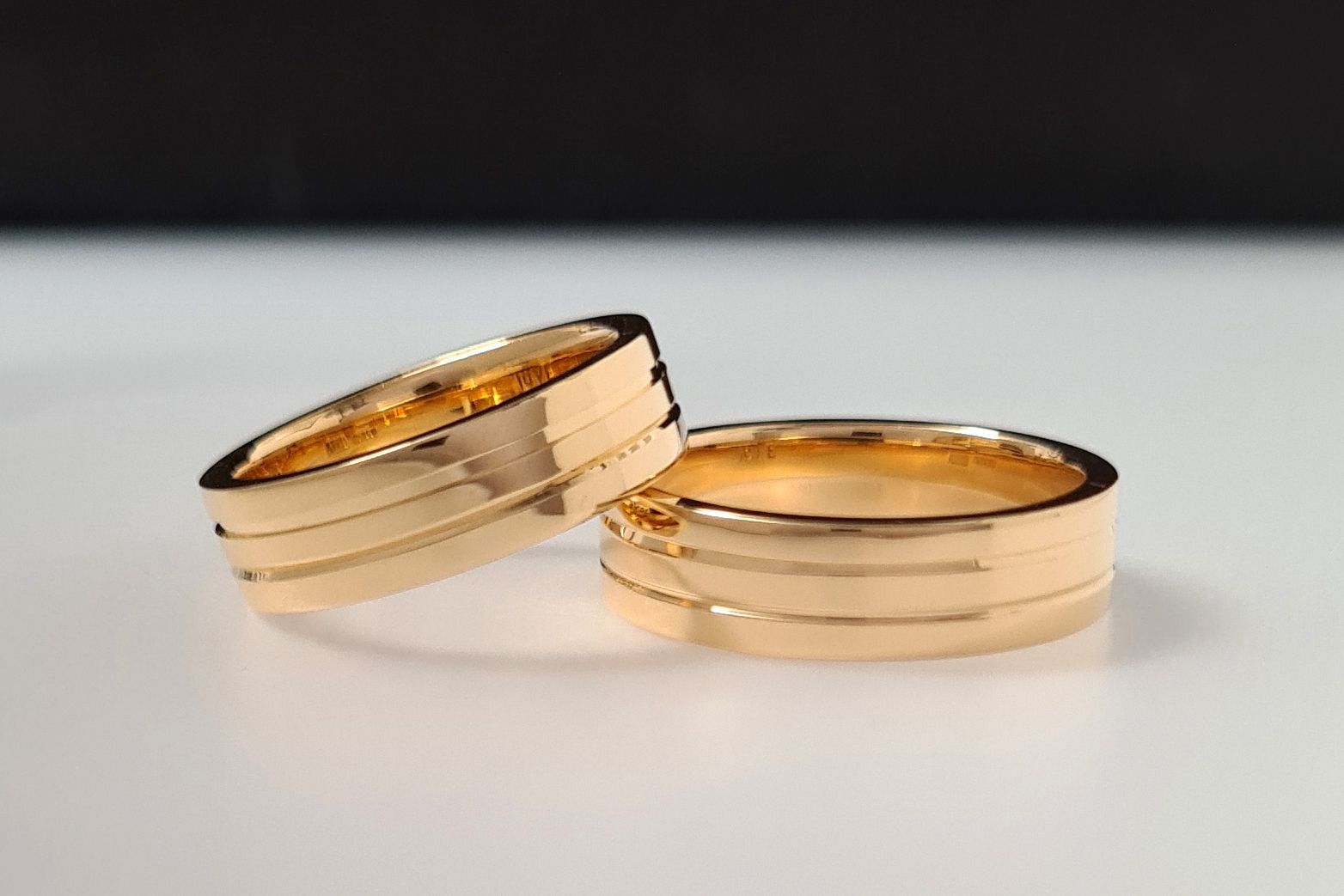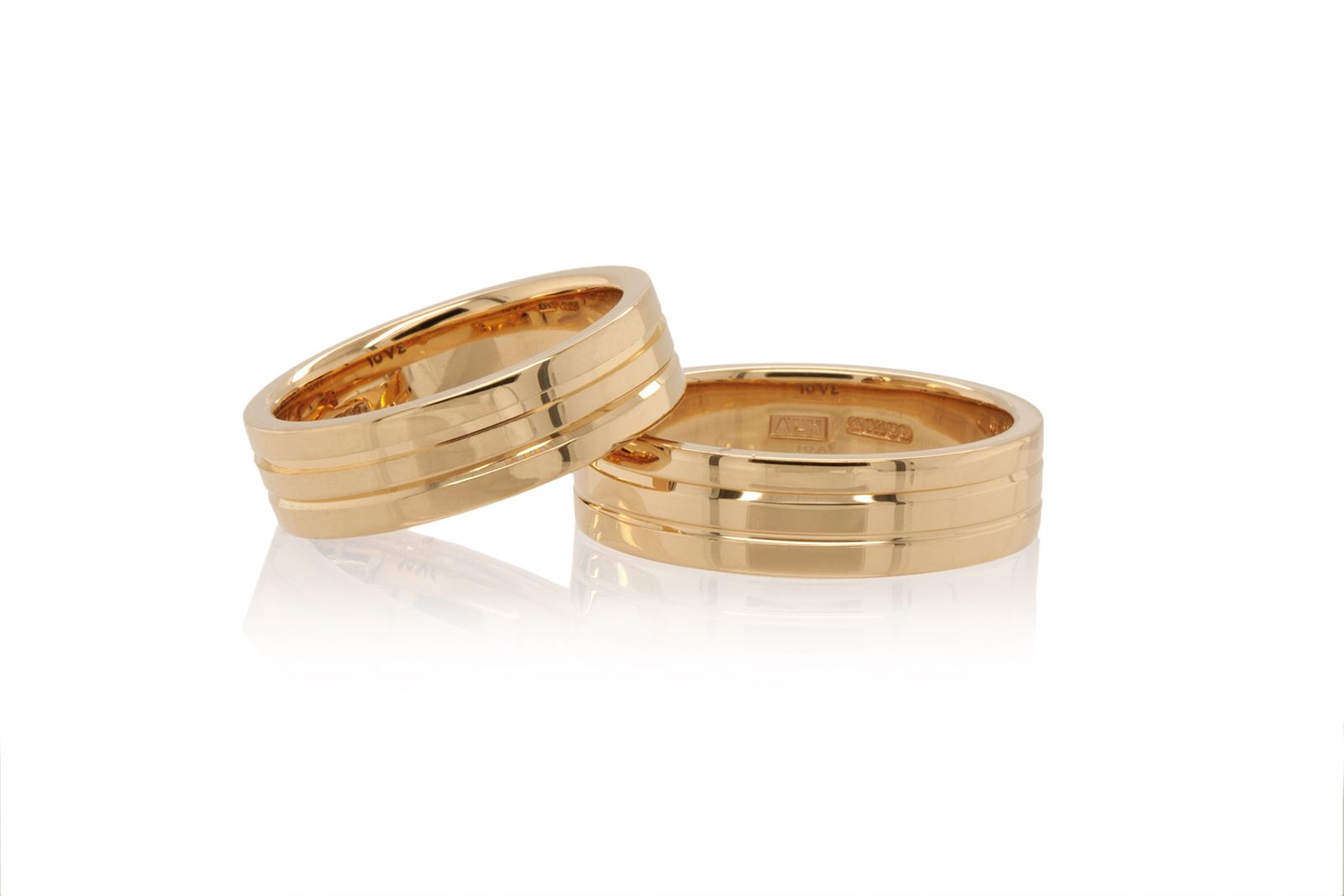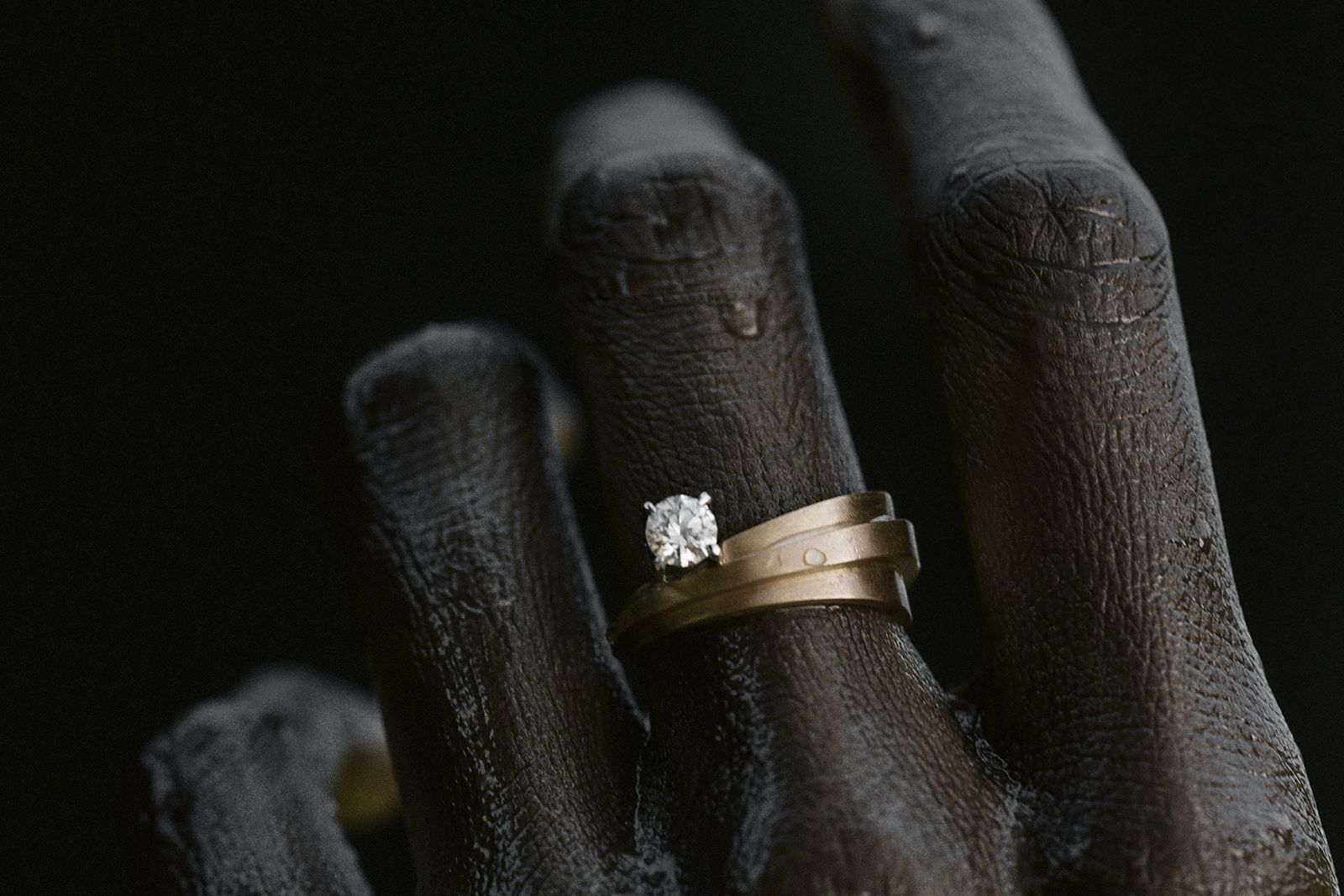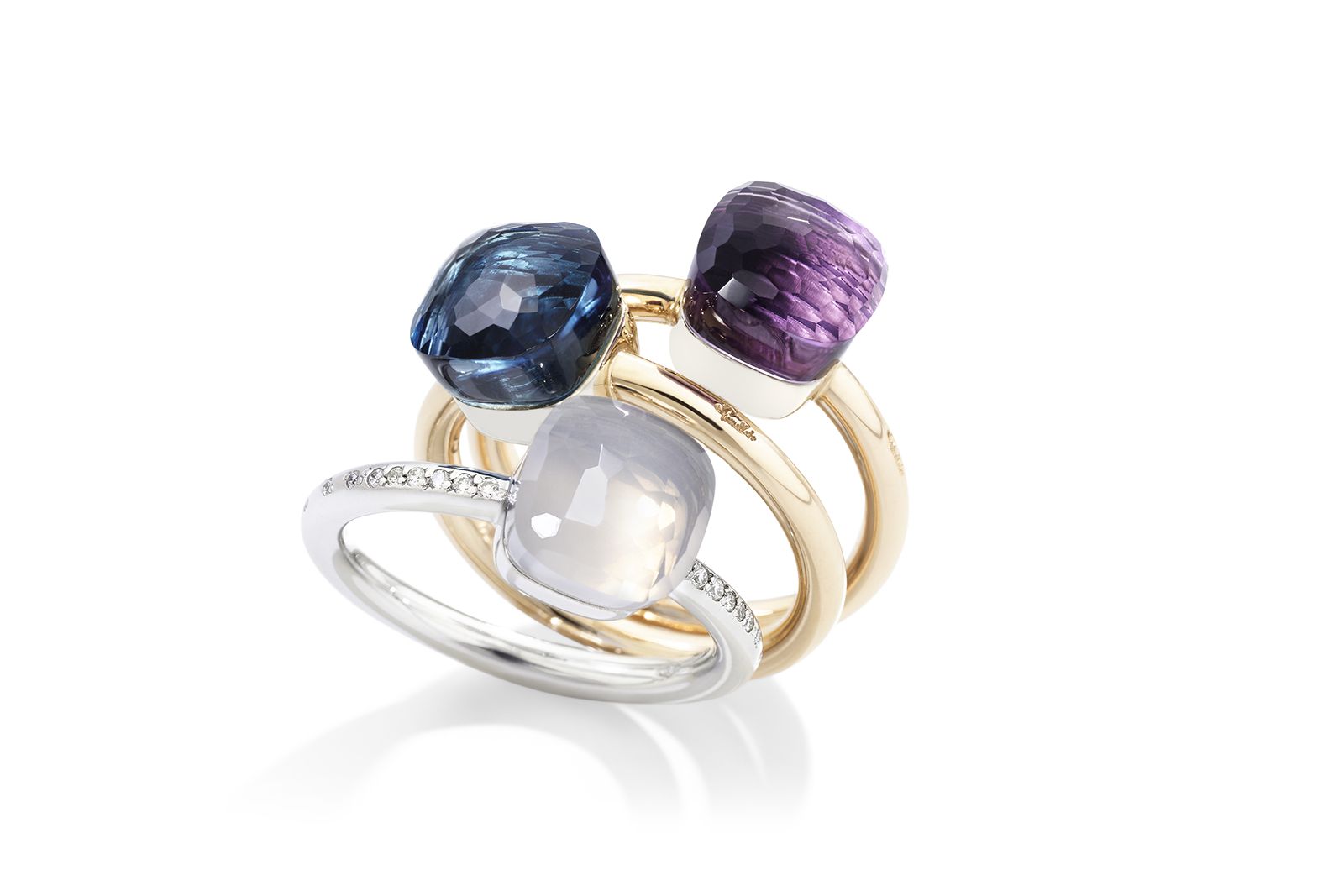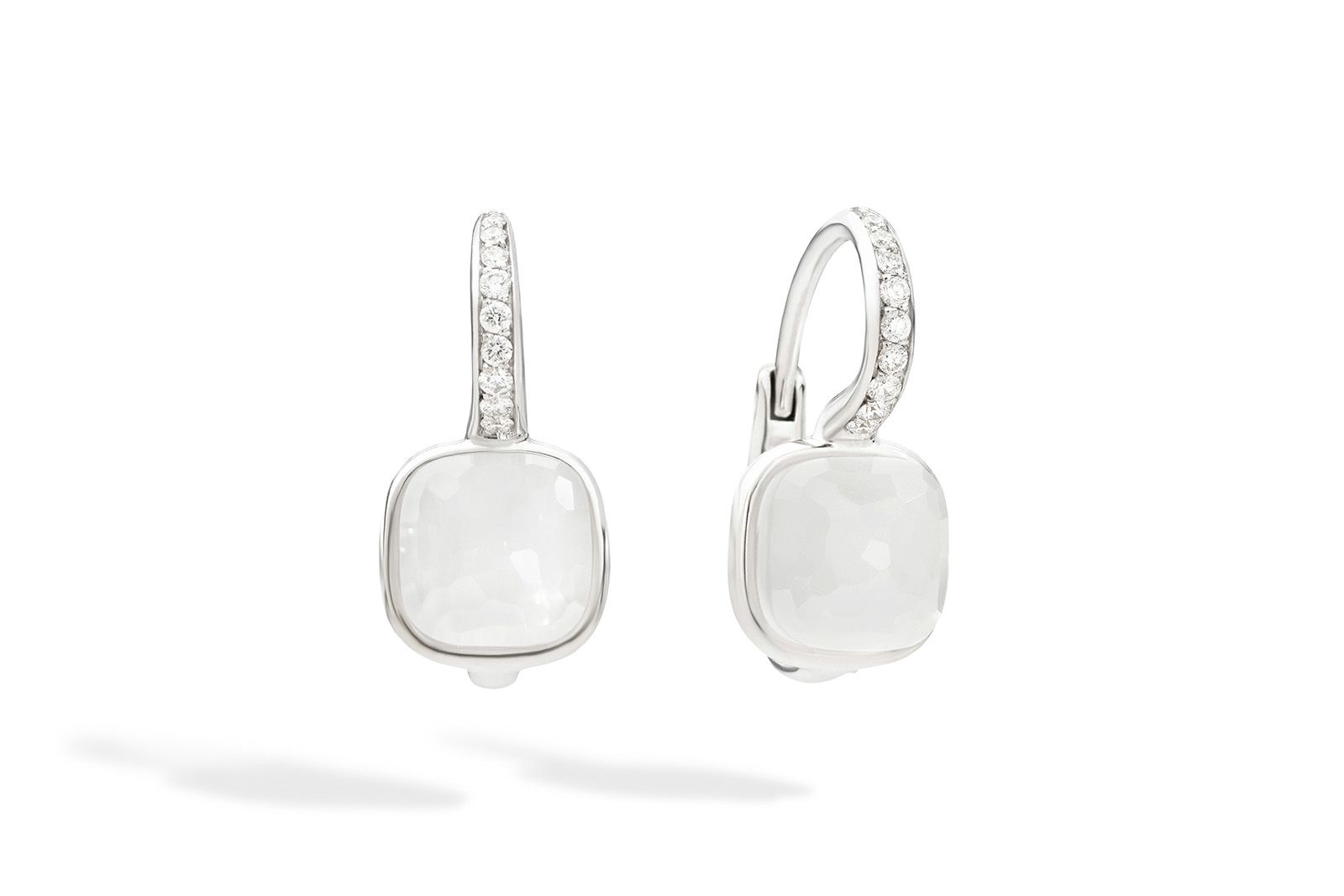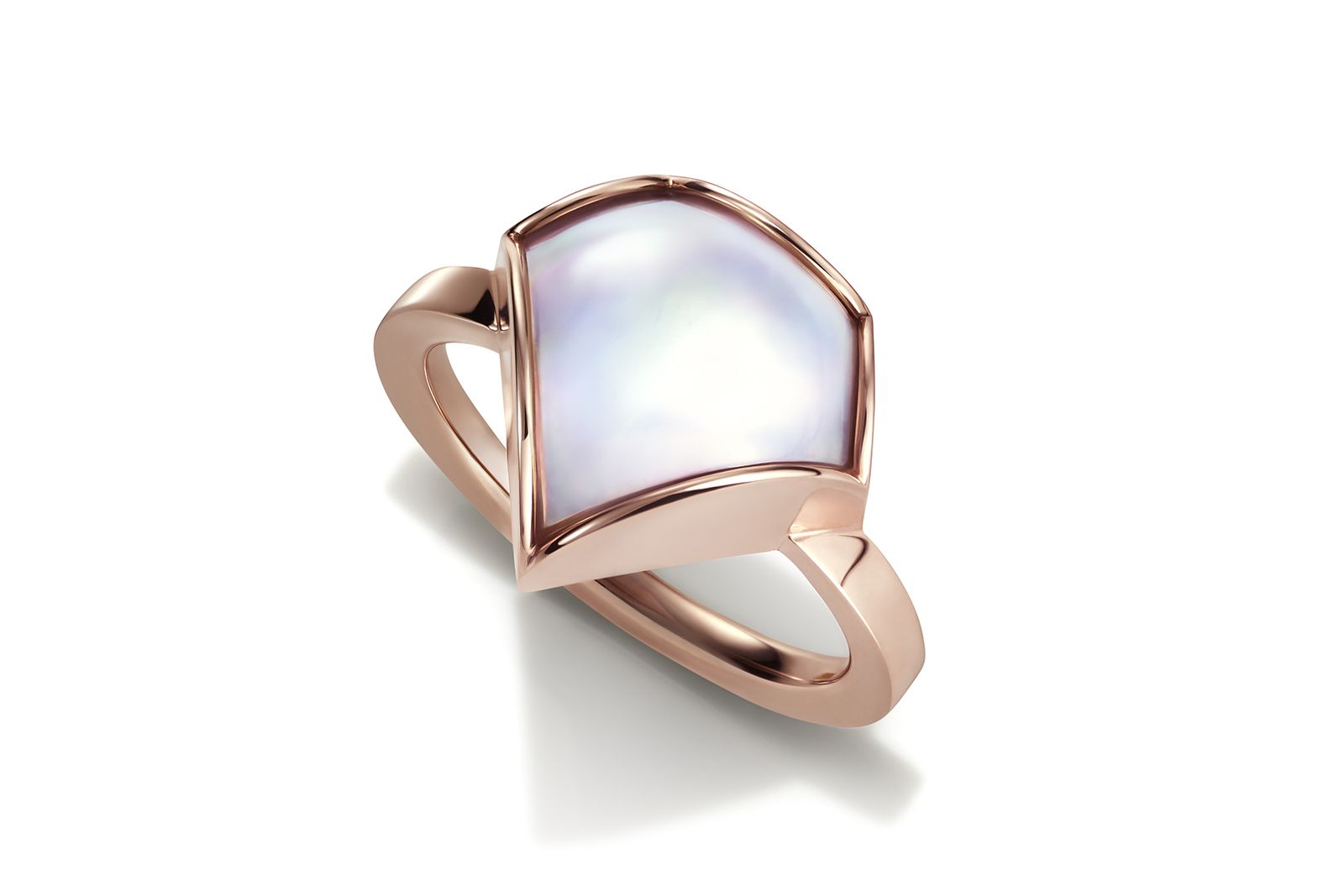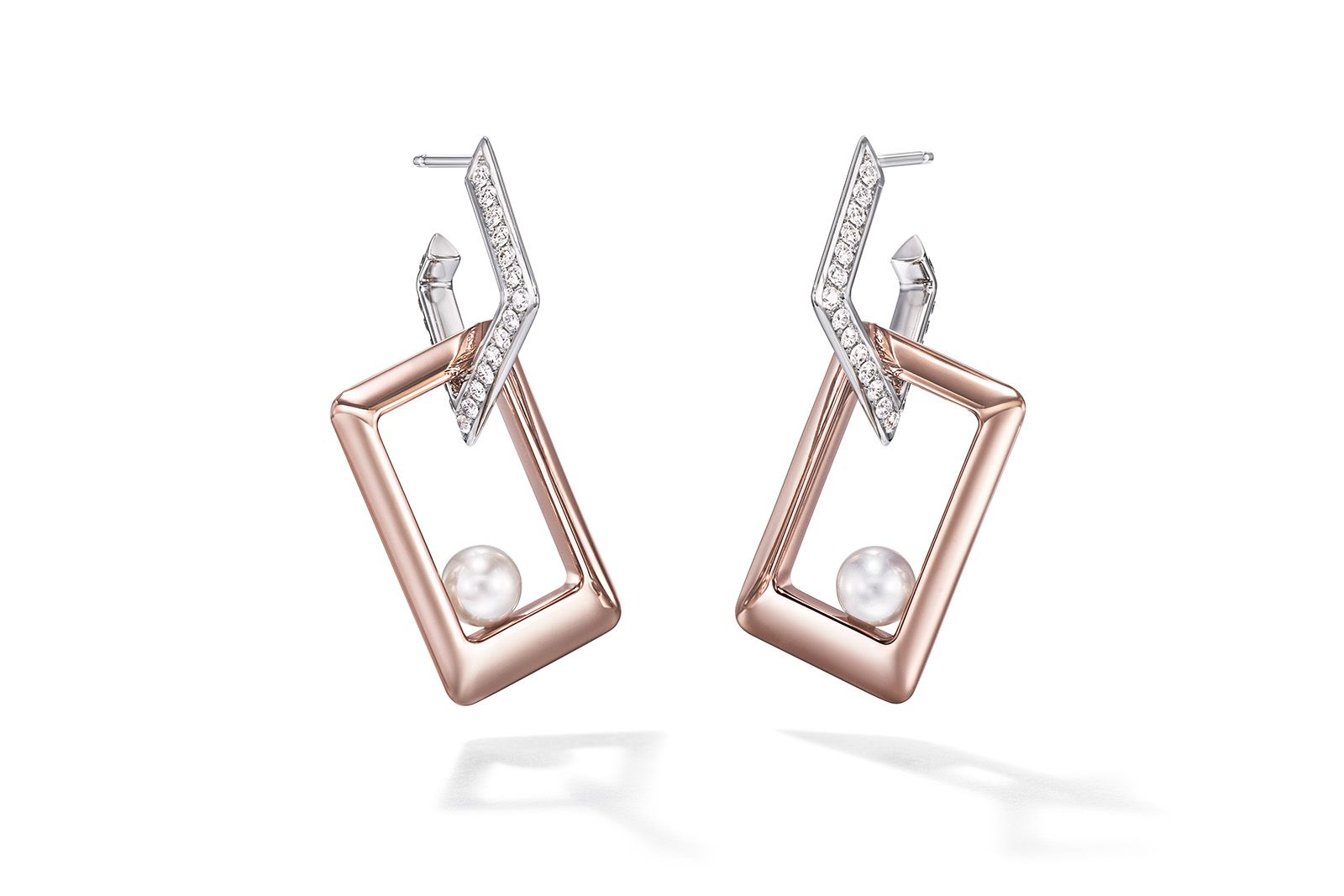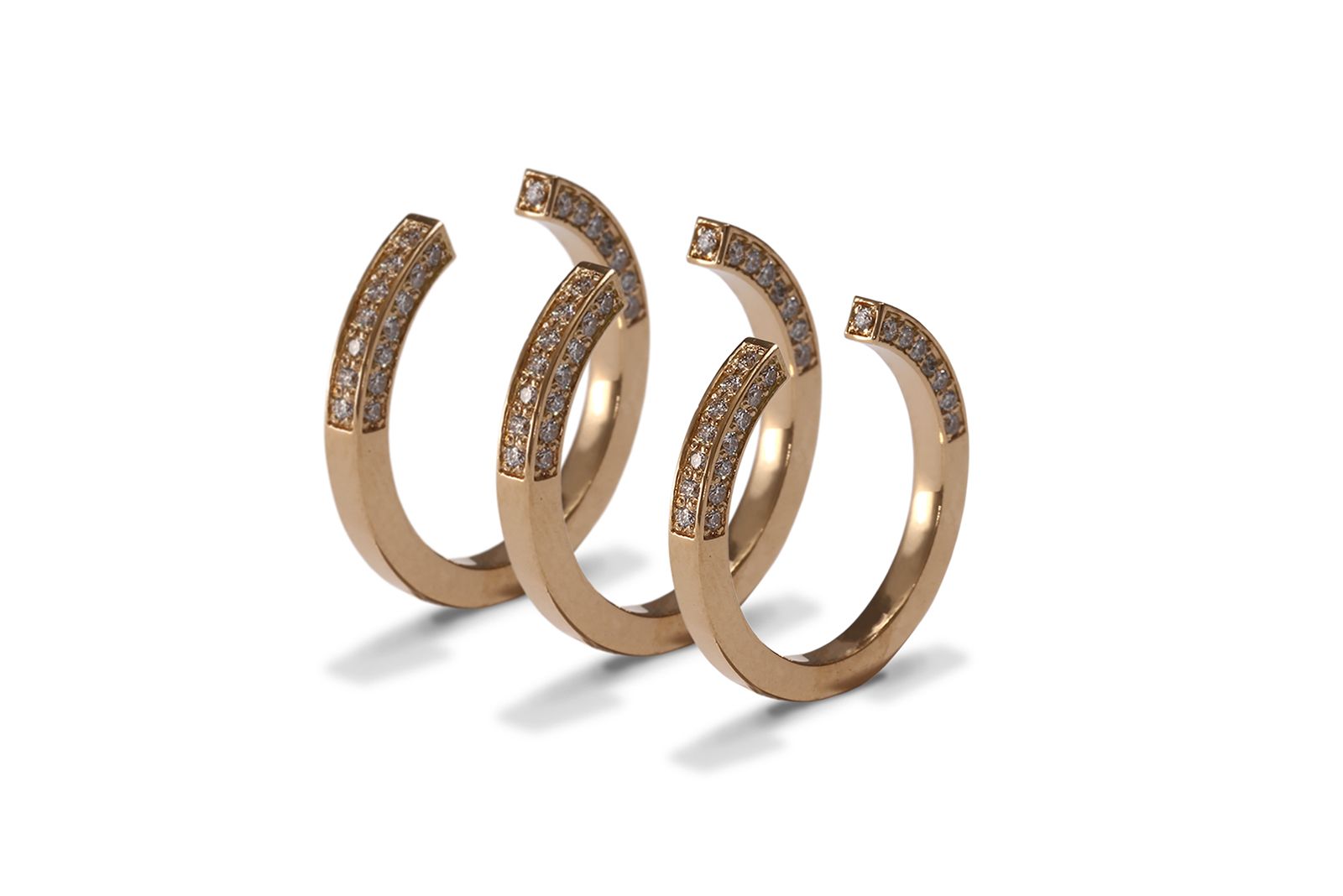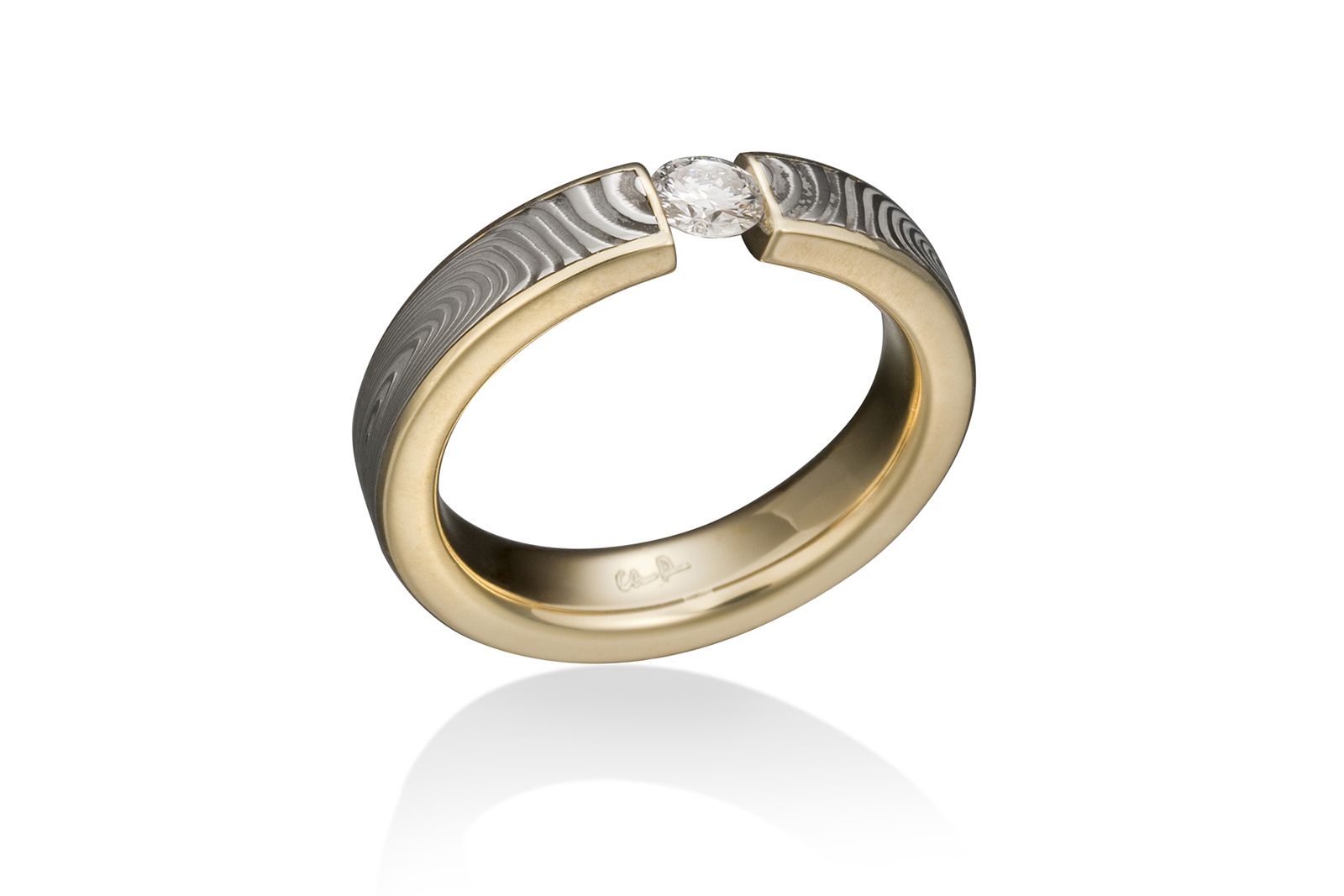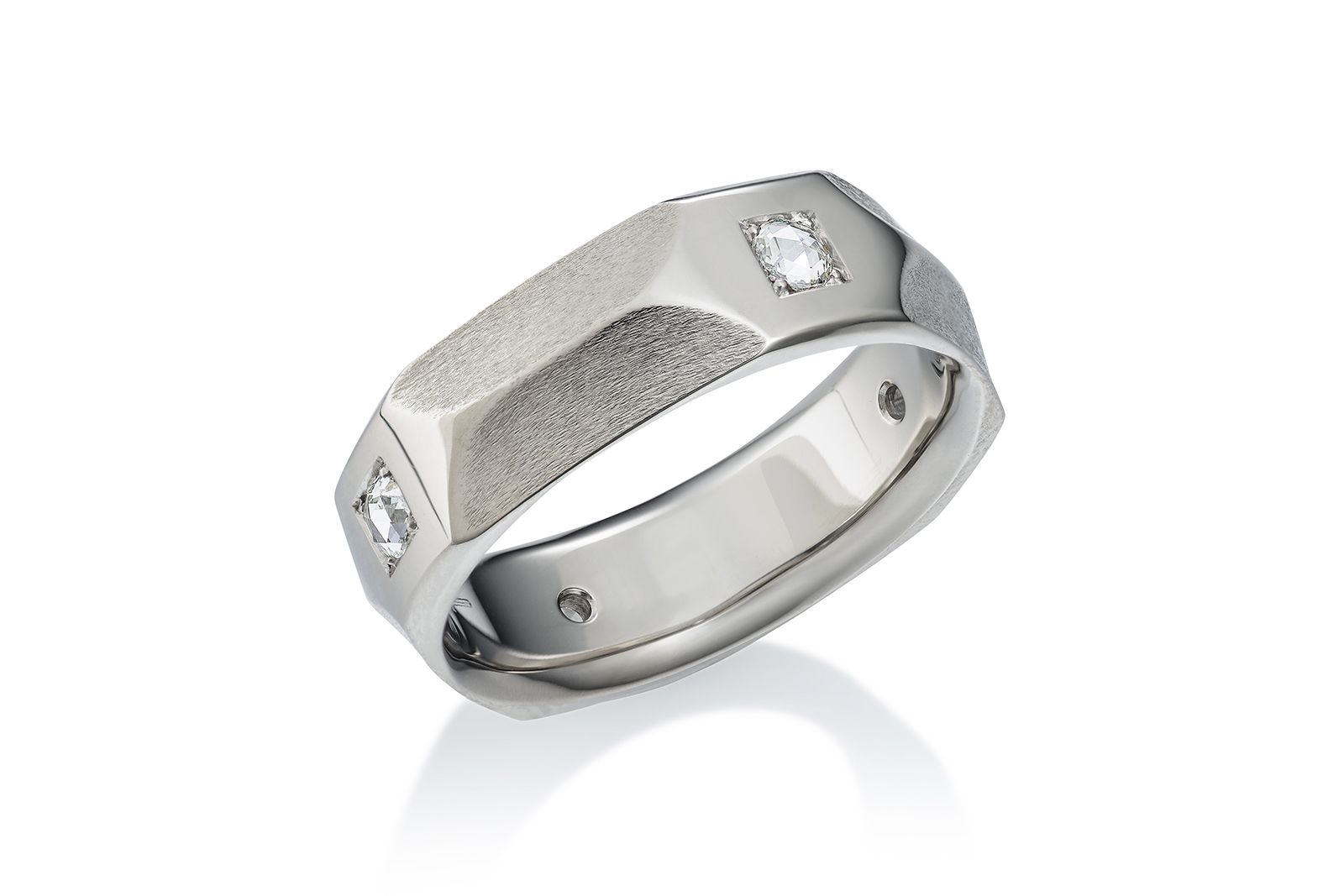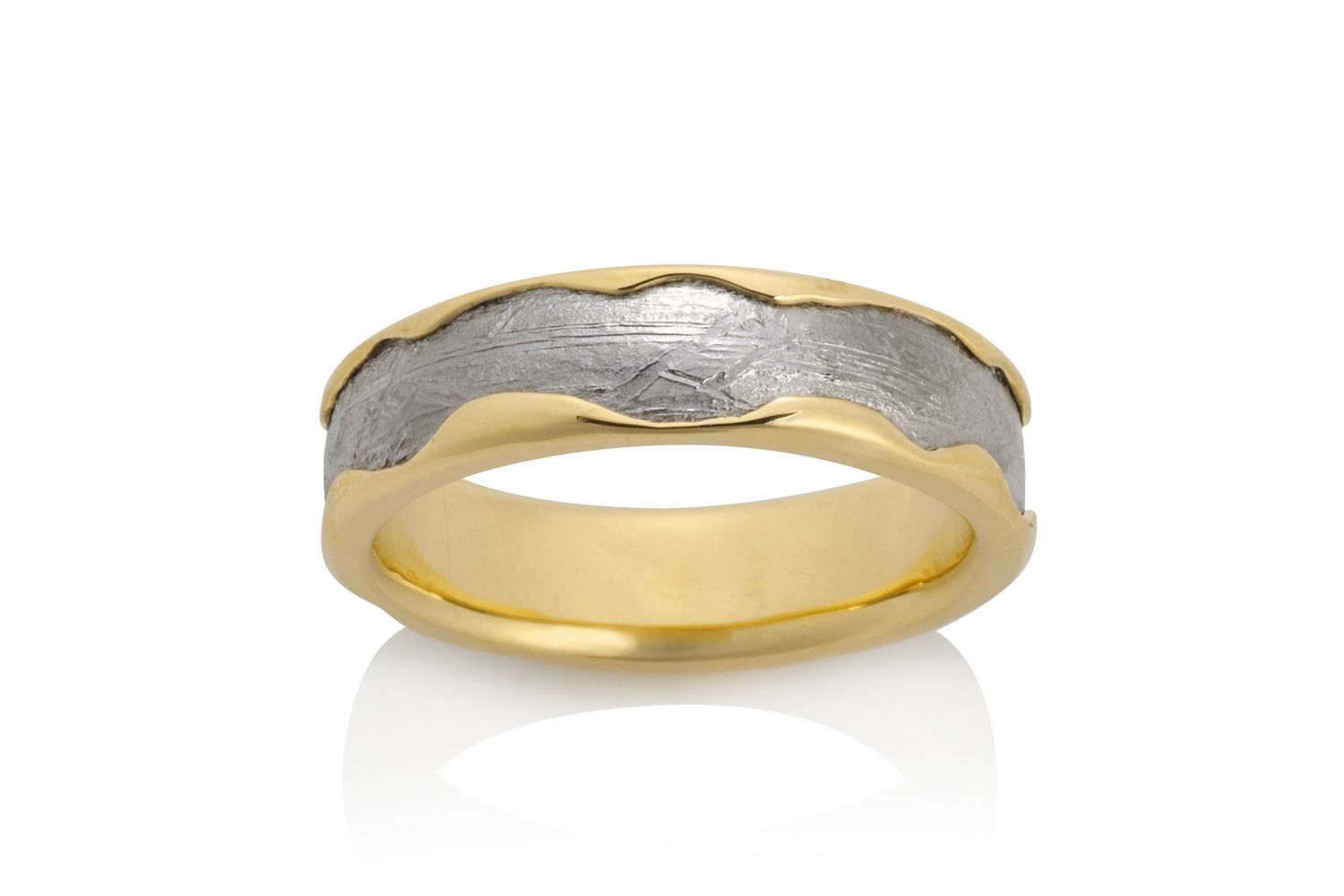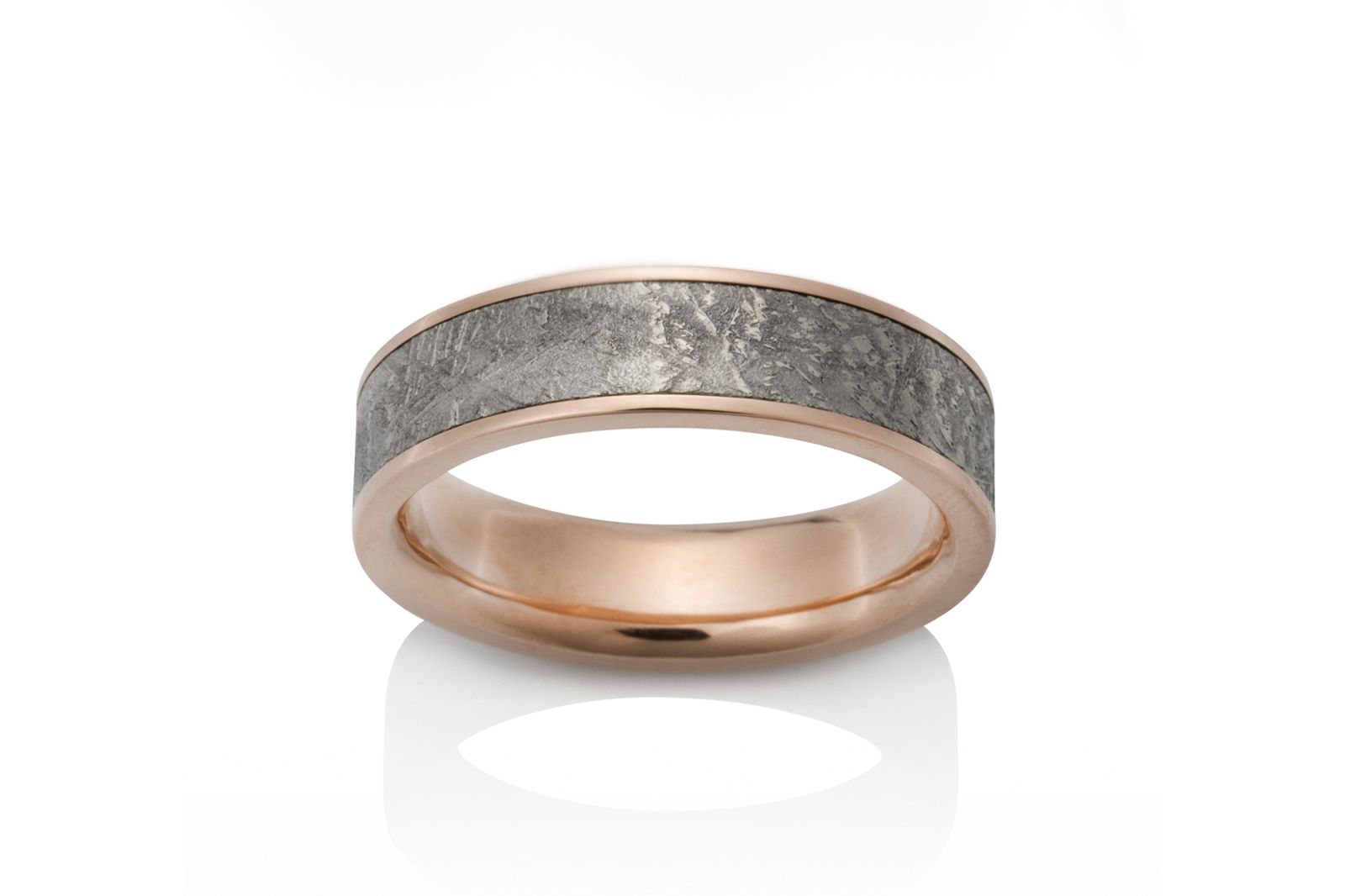

Mixed Metals: The Rise of Bespoke Precious Alloys in Jewellery Design
Jewellery brands are always looking to stand out, and a bespoke alloy is a way to offer something a little different – be it a unique colour of gold or a practical benefit such as greater strength. But what exactly do we mean by alloys, and what is going into the mix?
When jewellers speak of precious metals, they rarely mention that the ring on your finger is not made of pure gold but is, in fact, a mixture of metals. Copper and zinc, it would seem, don’t quite have the same romantic narrative as gold. Yet, as we seek to better understand the jewels we adorn ourselves with, some designers are turning our attention to the alloys that form the metal by whipping up enticing bespoke blends.
What is an Alloy?
Before we delve into the exciting possibilities of bespoke alloys, first, we must understand exactly what an alloy is. The term refers to the mixture of metals blended to create – in the case of jewellery – a precious metal such as gold, silver or platinum. Let’s take gold as our example. When purchasing jewels, you will know that 18k gold is superior – or at least more expensive – than 9k gold. The question is, why? The term 18k refers to a formula. When you see a hallmark identifying a jewel as such with the number 750, you will know that the alloy is at least 75% pure gold. For 9k, hallmarked as 375, it is 37.5% pure gold.
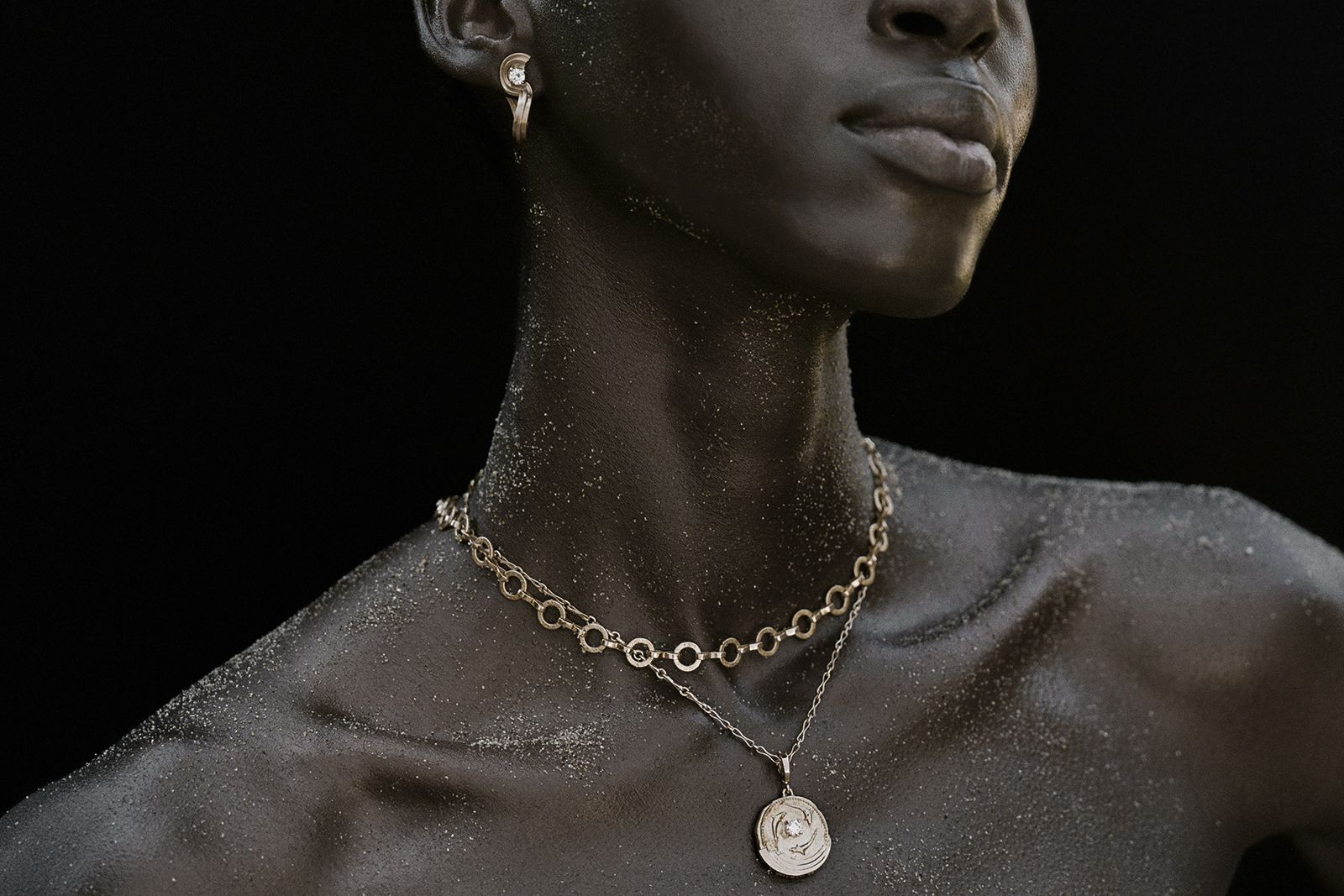
Azlee gold chain and pendant
What is in the other 25%, or 62.5%, is where things get interesting. By altering the other metals added to pure gold, jewellers can impact the metal’s colour or strength. For example, adding a high dose of copper to gold will turn it pink, while white gold is achieved through mixing in metals such as nickel, silver, palladium, zinc and copper. Play with the measurements, and a silver-copper-zinc blend of different proportions can create green gold. Los Angeles-based jewellery designer Baylee Ann Zwart charged her gold supplier with creating a blend exclusive to her Azlee brand. Rather than seeking a radical difference, she was simply seeking a warmer, less green tone of 18k yellow gold. The shift is subtle, but she says her clients notice and appreciate its softness.
Superior Gold Alloys
British jeweller Isabella Day makes all of her alloys at her studio in Dartmouth on the southwest coast of Devon. She plays around with recipes to create unique colours, including peach, green and grey gold. One of her special blends is white gold, but it is greyer than the white gold you might be used to, which will usually be plated with rhodium to achieve that high shine. Day’s white gold does not need plating as she uses a more expensive alloy mix of silver and palladium. It costs more initially, but it eliminates the upkeep of replating. As she points out: “Not all alloys are equal.”

Isabella Day gold Men’s Star Map Engagement Ring
Italian jeweller Pomellato has also created its own bespoke white gold alloy to eliminate the need for rhodium plating. Called Manganese White Gold, the 18k white gold blend offers “a longer lasting, brighter white gold eliminating the need for a rhodium plating”, the brand promises. It has put the blend to good use in the Nudo collection, pairing it with white diamonds and milky quartz gemstones for a pleasingly cool achromatic aesthetic.
The Best Colour Gold for Your Skin Tone
Some jewellers seek to blend in rather than stand out when mixing up alloys. Japanese pearl brand Tasaki, for example, started work on a bespoke 18k rose gold in 2009 and launched its branded alloy Sakuragold 18 months later. The result is gold with a deeper red hue than standard rose gold. “Tasaki aims to make pearls more wearable and, with this in mind, offering a metal that compliments any skin colour will ensure greater wearability,” says Yoshikazu Yamada, chief marketing officer at the brand.
It also connects the brand to its cultural roots, being inspired by the colours of the cherry blossom trees that are so cherished in Japan. In Sweden, they have their own patriotic blend of rose gold tailored to Scandinavian skin tones that is referred to as Swedish red gold. One of the few jewellery designers promoting this alloy outside of Sweden, where it is very popular, is Annette Welander.
It’s loved by the Nordic and Scandinavian people for its warm colour that is between rose and yellow gold in the tone, she explains. The Nordic and Scandinavians prefer a warmer-colour gold, given the colder climate and distinctive Nordic light. It is also very popular in Sweden among Swedes both for the colour but also for the heritage.
Bespoke Alloys Beyond Gold
This experimentation in alloys is not just limited to gold but other precious materials. American jewellery brand Le Vian has released its own blend of platinum, with the alloy adjusted to give it extra strength – although platinum is already revered for its durability. As such, Le Vian has named this alloy Resilience Platinum.
After two years of uncertainty, we crave strength and stability, says Le Vian chief executive Eddie LeVian of the drive to create this new alloy. Platinum is the precious metal of resilience, purity and high style – especially fitting when we all need to call on our inner strength.
Sarah Ho, a jewellery designer based in Monaco, has created her own blend of aluminium and titanium, tapping into the vogue for super-light metals in high jewellery. This can then be anodised (heat treated) to transform the metal into various colours, from sandy golden hues to electric blues and bright pinks.

Sarah Ho gold, white gold, aquamarine and diamond Laguna ring and Candy Rock Numerati rings
Mokume Gane: From Swords to Tiffany & Co.
Much mixing of metals is done to create one smooth colour, but there is a technique that celebrates the visual intermingling of different materials: mokume gane. To achieve it, three or more layers of contrasting precious metals, such as yellow gold and silver, are bonded together using heat and pressure. The finished appearance looks almost like a fingerprint or the grain of rich wood. This art form was first developed in 17th century Japan as a decorative flourish for swords. By the 19th century, as the tradition of sword holding ebbed, the artform had nearly died out. However, in 1878, Tiffany & Co. silversmith Edward C. Moore began experimenting with the technique to create a collection of silverware that would win international acclaim and spark a new interest in this metalsmithing skill.
Few practice the craft today. One of those artisans is Chris Ploof, a jeweller and metalsmith based in Massachusetts in the United States. A dedicated student of metalwork, Ploof has studied the ancient mokume gane techniques and married these with his own research to create a new way of layering precious metals the metal that gives a more reliable result. He uses this to craft rings, including wedding bands and engagement rings.
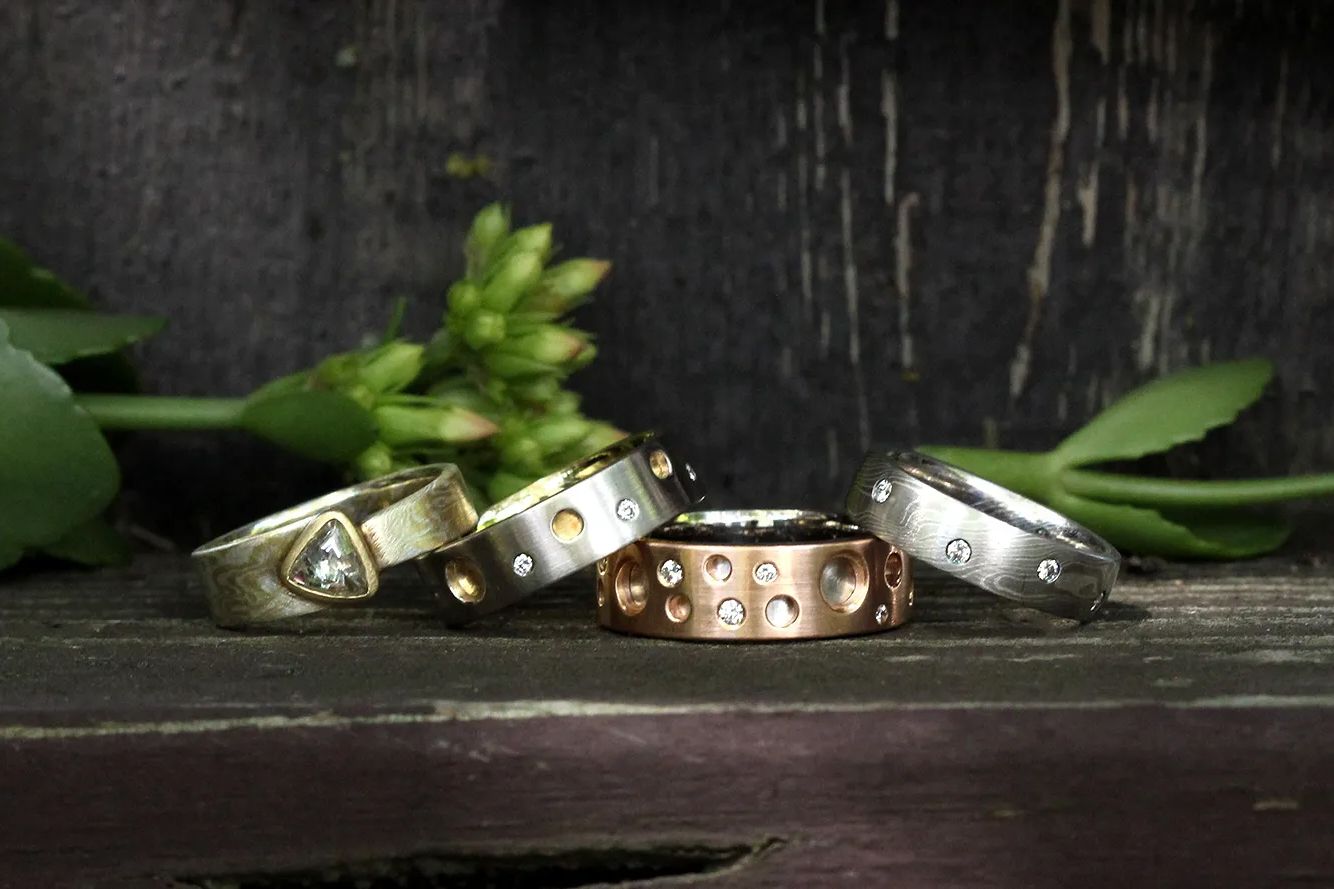
Chris Ploof Designs
No two rings are ever identical – it’s like a snowflake or a fingerprint, says Ploof, describing how after the metals are bonded together, it is twisted, cut and carved to create the wood grain effect. It’s a great way to get multiple metals into a jewellery piece. What has kept me working with it is its natural beauty and also the difficulty in making it – I love a good challenge. In order to be good at it, it really tests your technical as well as artistic excellence.
Mixing metals is not a new technique – as Ploof’s mokum gane demonstrates – but it is a practice that is gaining momentum as jewellers turn mixologists in a bid to stand out or simply to connect more deeply with their craft. What do you think… would you try a bespoke blend of precious metals?

WORDS
Katerina Perez is a jewellery insider, journalist and brand consultant with more than 15 years’ experience in the jewellery sector. Paris-based, Katerina has worked as a freelance journalist and content editor since 2011, writing articles for international publications. To share her jewellery knowledge and expertise, Katerina founded this website and launched her @katerina_perez Instagram in 2013.

Mixed Metals: The Rise of Bespoke Precious Alloys in Jewellery Design
Jewellery brands are always looking to stand out, and a bespoke alloy is a way to offer something a little different – be it a unique colour of gold or a practical benefit such as greater strength. But what exactly do we mean by alloys, and what is going into the mix?
When jewellers speak of precious metals, they rarely mention that the ring on your finger is not made of pure gold but is, in fact, a mixture of metals. Copper and zinc, it would seem, don’t quite have the same romantic narrative as gold. Yet, as we seek to better understand the jewels we adorn ourselves with, some designers are turning our attention to the alloys that form the metal by whipping up enticing bespoke blends.
What is an Alloy?
Before we delve into the exciting possibilities of bespoke alloys, first, we must understand exactly what an alloy is. The term refers to the mixture of metals blended to create – in the case of jewellery – a precious metal such as gold, silver or platinum. Let’s take gold as our example. When purchasing jewels, you will know that 18k gold is superior – or at least more expensive – than 9k gold. The question is, why? The term 18k refers to a formula. When you see a hallmark identifying a jewel as such with the number 750, you will know that the alloy is at least 75% pure gold. For 9k, hallmarked as 375, it is 37.5% pure gold.

Azlee gold chain and pendant
What is in the other 25%, or 62.5%, is where things get interesting. By altering the other metals added to pure gold, jewellers can impact the metal’s colour or strength. For example, adding a high dose of copper to gold will turn it pink, while white gold is achieved through mixing in metals such as nickel, silver, palladium, zinc and copper. Play with the measurements, and a silver-copper-zinc blend of different proportions can create green gold. Los Angeles-based jewellery designer Baylee Ann Zwart charged her gold supplier with creating a blend exclusive to her Azlee brand. Rather than seeking a radical difference, she was simply seeking a warmer, less green tone of 18k yellow gold. The shift is subtle, but she says her clients notice and appreciate its softness.
Superior Gold Alloys
British jeweller Isabella Day makes all of her alloys at her studio in Dartmouth on the southwest coast of Devon. She plays around with recipes to create unique colours, including peach, green and grey gold. One of her special blends is white gold, but it is greyer than the white gold you might be used to, which will usually be plated with rhodium to achieve that high shine. Day’s white gold does not need plating as she uses a more expensive alloy mix of silver and palladium. It costs more initially, but it eliminates the upkeep of replating. As she points out: “Not all alloys are equal.”

Isabella Day gold Men’s Star Map Engagement Ring
Italian jeweller Pomellato has also created its own bespoke white gold alloy to eliminate the need for rhodium plating. Called Manganese White Gold, the 18k white gold blend offers “a longer lasting, brighter white gold eliminating the need for a rhodium plating”, the brand promises. It has put the blend to good use in the Nudo collection, pairing it with white diamonds and milky quartz gemstones for a pleasingly cool achromatic aesthetic.
The Best Colour Gold for Your Skin Tone
Some jewellers seek to blend in rather than stand out when mixing up alloys. Japanese pearl brand Tasaki, for example, started work on a bespoke 18k rose gold in 2009 and launched its branded alloy Sakuragold 18 months later. The result is gold with a deeper red hue than standard rose gold. “Tasaki aims to make pearls more wearable and, with this in mind, offering a metal that compliments any skin colour will ensure greater wearability,” says Yoshikazu Yamada, chief marketing officer at the brand.
It also connects the brand to its cultural roots, being inspired by the colours of the cherry blossom trees that are so cherished in Japan. In Sweden, they have their own patriotic blend of rose gold tailored to Scandinavian skin tones that is referred to as Swedish red gold. One of the few jewellery designers promoting this alloy outside of Sweden, where it is very popular, is Annette Welander.
It’s loved by the Nordic and Scandinavian people for its warm colour that is between rose and yellow gold in the tone, she explains. The Nordic and Scandinavians prefer a warmer-colour gold, given the colder climate and distinctive Nordic light. It is also very popular in Sweden among Swedes both for the colour but also for the heritage.
Bespoke Alloys Beyond Gold
This experimentation in alloys is not just limited to gold but other precious materials. American jewellery brand Le Vian has released its own blend of platinum, with the alloy adjusted to give it extra strength – although platinum is already revered for its durability. As such, Le Vian has named this alloy Resilience Platinum.
After two years of uncertainty, we crave strength and stability, says Le Vian chief executive Eddie LeVian of the drive to create this new alloy. Platinum is the precious metal of resilience, purity and high style – especially fitting when we all need to call on our inner strength.
Sarah Ho, a jewellery designer based in Monaco, has created her own blend of aluminium and titanium, tapping into the vogue for super-light metals in high jewellery. This can then be anodised (heat treated) to transform the metal into various colours, from sandy golden hues to electric blues and bright pinks.

Sarah Ho gold, white gold, aquamarine and diamond Laguna ring and Candy Rock Numerati rings
Mokume Gane: From Swords to Tiffany & Co.
Much mixing of metals is done to create one smooth colour, but there is a technique that celebrates the visual intermingling of different materials: mokume gane. To achieve it, three or more layers of contrasting precious metals, such as yellow gold and silver, are bonded together using heat and pressure. The finished appearance looks almost like a fingerprint or the grain of rich wood. This art form was first developed in 17th century Japan as a decorative flourish for swords. By the 19th century, as the tradition of sword holding ebbed, the artform had nearly died out. However, in 1878, Tiffany & Co. silversmith Edward C. Moore began experimenting with the technique to create a collection of silverware that would win international acclaim and spark a new interest in this metalsmithing skill.
Few practice the craft today. One of those artisans is Chris Ploof, a jeweller and metalsmith based in Massachusetts in the United States. A dedicated student of metalwork, Ploof has studied the ancient mokume gane techniques and married these with his own research to create a new way of layering precious metals the metal that gives a more reliable result. He uses this to craft rings, including wedding bands and engagement rings.

Chris Ploof Designs
No two rings are ever identical – it’s like a snowflake or a fingerprint, says Ploof, describing how after the metals are bonded together, it is twisted, cut and carved to create the wood grain effect. It’s a great way to get multiple metals into a jewellery piece. What has kept me working with it is its natural beauty and also the difficulty in making it – I love a good challenge. In order to be good at it, it really tests your technical as well as artistic excellence.
Mixing metals is not a new technique – as Ploof’s mokum gane demonstrates – but it is a practice that is gaining momentum as jewellers turn mixologists in a bid to stand out or simply to connect more deeply with their craft. What do you think… would you try a bespoke blend of precious metals?

WORDS
Katerina Perez is a jewellery insider, journalist and brand consultant with more than 15 years’ experience in the jewellery sector. Paris-based, Katerina has worked as a freelance journalist and content editor since 2011, writing articles for international publications. To share her jewellery knowledge and expertise, Katerina founded this website and launched her @katerina_perez Instagram in 2013.
